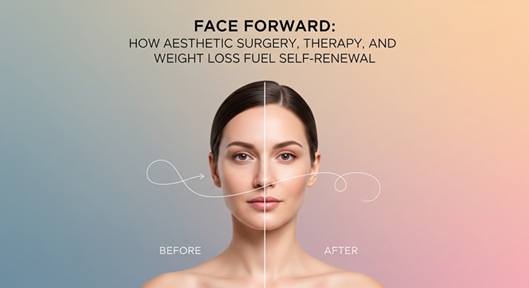Navigating the Postpartum Journey Together
Bringing a baby into the world is one of life’s most rewarding milestones—but it also ushers in profound physical, emotional, and developmental changes for the entire family. Between sleepless nights, recovery from childbirth, and adapting to a new household rhythm, parents often find themselves stretched thin. Supporting both maternal health and early child development requires a village—one that includes OB/GYNs, behavioral specialists, and family doctors working hand in hand.
Postpartum wellness is not limited to physical recovery. It also involves emotional stability, hormonal balance, and a strong foundation for a child’s growth. Families who embrace collaborative care—combining women’s health specialists, developmental therapy, and primary care—can better navigate the early months with confidence and peace of mind.
Healing After Birth: The Essential Role of OB/GYN Care
The postpartum phase extends well beyond the first few weeks after delivery. Even after receiving medical clearance to resume regular activities, many mothers continue to experience hormonal shifts, fatigue, and gradual physical recovery. Regular visits to an OB/GYN help ensure that healing remains on track while also addressing long-term reproductive health.
At an OB/GYN office in Newton, MA, such as Newton-Wellesley Obstetrics & Gynecology, postpartum care typically includes physical examinations, contraception counseling, and screenings for postpartum depression or anxiety. These follow-up appointments create space to discuss concerns like pelvic discomfort, irregular bleeding, or emotional changes that may not always surface in early postpartum checkups.
By prioritizing continued OB/GYN care, new mothers can feel confident that their physical and emotional well-being is being closely supported. When needed, OB/GYNs may coordinate with mental health and primary care providers to address issues such as thyroid imbalances, fatigue, or nutrition — ensuring that recovery is comprehensive, compassionate, and attuned to every stage of motherhood.
The Family Connection: Why Parental Health Shapes Child Development
Parenting is both joyful and demanding, and children thrive best when caregivers are physically and emotionally well. Studies show that when mothers receive consistent postpartum support, children display stronger emotional regulation and secure attachment. The stability of a parent’s health—both mental and physical—ripples through the household.
Primary care providers play a key role here. At family medicine clinics like Grand Forks Clinic, doctors help parents monitor recovery while keeping up with their baby’s early pediatric milestones. Having one care team that knows both parent and child simplifies communication and ensures continuity of care—from postpartum follow-ups to newborn checkups and immunizations.
This family-centered approach promotes shared wellness goals: better sleep, stress management, and early recognition of health concerns for everyone in the home.
Understanding Early Development and Neurodivergence
As babies grow into toddlers, families begin to notice their unique personalities and behaviors. Some children reach milestones quickly, while others need additional time or support. When developmental delays or differences in communication and social skills appear, early assessment becomes critical.
Organizations such as Sunshine Advantage provide Applied Behavior Analysis (ABA) therapy for neurodivergent children, helping families build structure and positive reinforcement techniques at home and school. ABA therapy is especially valuable for children with autism, offering step-by-step guidance that strengthens communication, reduces challenging behaviors, and promotes independence.
When healthcare teams—OB/GYNs, pediatricians, and behavioral specialists—collaborate, parents gain a clearer picture of their child’s needs and feel less isolated navigating complex emotions and decisions.
Building Resilience: Supporting Mothers Beyond the Physical
The emotional side of postpartum life often goes under-recognized. Feelings of anxiety, guilt, or sadness can arise even when everything seems to be going well. Roughly one in seven women experiences postpartum depression, though many never seek help.
Routine visits to an OB/GYN or family doctor can provide an opening to discuss these feelings. Screening for depression, fatigue, or hormonal imbalance allows early intervention before symptoms escalate. Behavioral health referrals, peer support groups, and guided counseling can help mothers find stability again.
Families are encouraged to view emotional recovery as equally important as physical healing. Support from loved ones—combined with accessible, compassionate healthcare—can transform this vulnerable period into one of growth and connection.
Coordinating Pediatric and Family Care
A child’s first year is filled with rapid change. Routine pediatric visits track growth, vaccinations, and early developmental progress. Meanwhile, family physicians ensure parents maintain their own health amid the demands of caregiving.
Primary care clinics like GrandForksClinic.com offer a unified space for both adults and children to receive preventive care. This “one-roof” model simplifies scheduling and helps providers identify hereditary or lifestyle factors that affect the whole family—such as allergies, sleep patterns, or nutrition habits.
Coordination between pediatricians, OB/GYNs, and therapists like those from Sunshine Advantage ensures children receive individualized attention while parents get the guidance they need to sustain a healthy household rhythm.
When Developmental Challenges Arise
Discovering that a child may have developmental differences can be overwhelming. Parents may feel uncertain about the future or unsure where to begin. The key is early action—acknowledging that therapy and intervention can dramatically improve outcomes.
Applied Behavior Analysis therapy helps families create predictable routines that reduce stress and improve communication. Sessions may focus on teaching life skills, increasing attention spans, or introducing structured play that supports learning. For parents, these programs offer hands-on coaching that builds confidence in managing behaviors and celebrating progress.
By integrating ABA support into the family’s broader healthcare plan, children benefit from consistency across environments, and parents gain peace of mind knowing that every part of their care team is aligned.
Nurturing the Parent-Child Relationship
While much of early healthcare focuses on medical milestones, nurturing connections is just as vital. Babies and toddlers respond strongly to their parents’ tone, touch, and facial expressions. Even small daily rituals—like reading together or gentle play—help shape emotional security.
Parents recovering from childbirth or adjusting to the demands of neurodivergent caregiving sometimes struggle with energy or patience. Regular check-ins with OB/GYNs and primary care doctors can help identify fatigue, anemia, or hormonal imbalances that affect mood and stamina. When families address both physical and emotional wellness, they’re better equipped to create calm, supportive environments where children can flourish.
Community and Workplace Support for Growing Families
Health doesn’t exist in isolation—it thrives within communities that value family well-being. Employers and local organizations can play a big role by offering flexible schedules, parental leave, or access to family wellness programs.
Clinics like Newton-Wellesley OB/GYN and Grand Forks Clinic often partner with community networks to provide parenting classes, breastfeeding workshops, or wellness screenings. Families can also explore early intervention programs and public resources designed to support children with developmental needs, many of which collaborate with behavioral specialists such as Sunshine Advantage.
These partnerships ensure that parents never have to navigate postpartum or early childhood challenges alone.
Conclusion: Thriving Together Through Every Stage
The months after childbirth set the tone for lifelong family health. By embracing a team-based approach—combining the expertise of OB/GYNs, pediatricians, behavioral therapists, and family doctors—parents can meet challenges with knowledge, confidence, and compassion.
Clinics such as Newton-Wellesley OB/GYN support maternal recovery and women’s reproductive health, while programs like Sunshine Advantage guide families through developmental milestones and neurodivergent care. Grand Forks Clinic bridges the gap with comprehensive family and pediatric services that promote prevention and long-term wellness.
Parenthood will always bring surprises, but with coordinated care and the right support network, families can do more than adjust—they can truly thrive, together.











